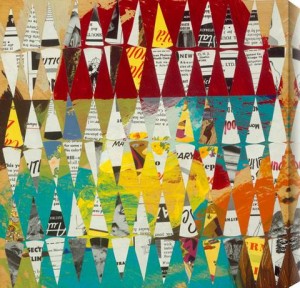A Revolution in Printing: Giclée on Canvas
Tech and art are a partnership for the ages. Where for years certain things were considered impossible to do or improve upon in the art world, in recent years technology has opened up countless doors once thought permanently shut, as it has in all areas of life. One such area to which new tech has brought exciting opportunities is that of art reproductions on canvas. Previously, reproducing prints of artworks was a difficult process, involving extensive set-up, and no process was able to acquire quite the level of exact detail desired by collectors. However, in the past thirty-odd years, a few brilliant new developments in printing technologies have changed all that by introducing a new type of print known to the art world as “giclée.”

Like many artistic practices, the history of the giclée print is an odd and fascinating story. It begins in the late 1980’s, when image scanning and image printing technologies were starting to reach a level of excellence and exactness that had hitherto been unavailable. Printers were getting better and better all the time, and eventually one was made known as the IRIS printer. This seriously cool piece of machinery produced color prints that were unparalleled at the time for their image and color reproduction, and it did it without leaving the typical “dots” that come from printing with other machines.
This neat new printer had a few major differences from a normal high-quality printer. First, the ink was sprayed continuously from four 1 micrometer glass jets, instead of as needed, and the particles of ink were charged electrically. A vibrating piezoelectric crystal, which caused it to spray at a 1 Mhz rate, regulated the flow of ink and all of the excess ink that wasn’t used was deflected by an electrostatic system to a waste area (thus why it was electrically charged). Instead of printing on a flat paper, the paper (or canvas) was wrapped around a cylinder in the machine, and the ink was sprayed on slowly, line by miniscule line.
The IRIS printer was originally designed and used to create high quality “proofs,” or sheets that would be used to test out color printing jobs before they were printed in larger amounts. However, the accuracy and spectacular beauty that the printer was capable of was soon noticed by a few folk with an artistic eye, who began to test the printer’s capabilities at printing fine art reproductions. This process quickly caught on, as it was capable of producing much more exact and long-lasting reproductions of art than the other processes at the time, the most popular of which was lithographic printing. In addition, once a piece had been accurately digitized and set up for printing on an IRIS printer (a process which still took a lot of work and expertise), it could be digitally stored and used whenever needed with little to no further set up required.
While the process of using IRIS printers to reproduce art on paper and canvas began in the late 1980’s, there was no universal name for the technique until 1991, when printmaker Jack Duganne came up with the term now in common use, “giclée.” Duganne didn’t like his gorgeous art prints being referred to as “proofs,” like other, less artistically-inclined prints made with IRISes, so he went in search of a better term. Duganne wanted a term that would get away from the computer and tech aspects and focus more on the artistic edge of the thing. He noticed that the French word for “nozzle” was gicleur, and that gicler meant to squirt, both of which relate to the way the printer works. He took these terms and came up with “giclée,” which has since caught on. The term wasn’t universally loved, as photographers liked the term “digigraph” and some found giclée to be pretentious, but the term spread and now means any high-quality art reproduction on canvas by large format printers, and not just those made on IRIS printers.

Since the 1990’s, giclée prints have grown hugely in popularity, as they provide a great middle ground between owning an original piece of art and having a lithographic reproduction. Giclée are much cheaper than real works, look almost exactly like the same thing, and are much more exact than other reproductions. In fact, many art museums have begun to display extremely high quality giclée prints!
If you’re interested in seeing some examples of giclée printed art, take a quick jaunt over to our sister company’s homepage. As we’ve mentioned before, Art Warehouses uses the same spectacular, top-quality custom stretched canvases we sell at Canvas Lot to print the very best giclée reproductions anywhere online or off. For art lovers like us who just can’t afford that multi-million dollar Picasso, giclée prints provide a thrilling and affordable opportunity to own great work and keep it in our own homes.

Printing and scanning technology isn’t slowing down, and is set to keep getting better every year. Who knows, maybe one day we’ll have robots that can use brushes to reproduce every stroke made by a master! Until then, giclée prints are simply the best reproductions available, and a great example of how tech and art can combine to create some absolutely marvelous examples of human creativity.